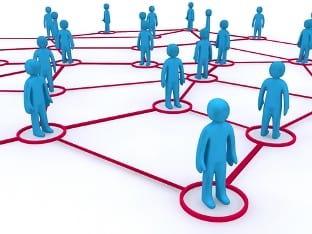 You are closer than you think to that distant person on the other side of the world who holds ideas contrary to yours. As you may know, the original “six degrees” finding, published in 1967 by the psychologist Stanley Milgram, was drawn from 296 volunteers who were asked to send a message by postcard, through friends and then friends of friends, to a specific person in a Boston suburb.
You are closer than you think to that distant person on the other side of the world who holds ideas contrary to yours. As you may know, the original “six degrees” finding, published in 1967 by the psychologist Stanley Milgram, was drawn from 296 volunteers who were asked to send a message by postcard, through friends and then friends of friends, to a specific person in a Boston suburb.
Now, new research using a slightly bigger cohort — 721 million Facebook users, more than one-tenth of the world’s population — has found people are separated on average only by 4.74 degrees. Developed by Facebook’s data team in collaboration with researchers at the Università degli Studi di Milano, the findings were posted on Facebook’s site on Nov. 21.
A New York Times article the same day about the data raised the question of what we exactly mean by the word “friend,” especially since on Facebook the average number of friends is 190, and I bet that you aren’t going to the restaurant this weekend with 190 of your friends. In fact, Nicholas Christakis of Harvard, who has been researching social networks and how they actually work, reports that we have on average six “real” Facebook friends, meaning those we really go to restaurants with on the weekend.
This number has been found in other offline research, too. Nicholas validated it on Facebook by saying those who you tagged in photos could be considered real friends – and, in fact, the online and offline worlds converge here on the number six. The Facebook data team also confirms that, actually, most people interact mainly with those similar to them, in the same country, at the same age level.
Now that we’ve ascertained only six people are “real” friends, should we care that Facebook reports we can reach any other human on Earth through only five, as they say, “hops”?
Yes, in fact, we should care deeply – as Christakis documents in his book Connected: The Surprising Power of Our Social Networks and How They Shape Our Lives. Those friends of friends of friends, that we’ve never met, actually are influencing us (and we are influencing them). Among the many statistics he reports:
- At one degree of separation, if your friend is happy, you are 15% more likely to be happy.
- At two degrees of separation, if your friend’s friend is happy, you are 10% more likely to be happy.
- At three degrees of separation, you are still 6% more likely to be happy. Think about it — at three degrees of separation, we can influence (and are influenced by) each other – even if we don’t know and have never met this other person.
Nicholas also digs into social network structures, showing how many of the properties we associate with groups are actually factors of the network structure more than attributes of any one person. He makes this point with an analogy using carbon atoms: The soft, opaque lead of a pencil contains the same identical atoms that you find in hard, clear diamonds — the only difference is the network structure they are in.
An idea he posits is that social networks magnify whatever they are seeded with, good or bad, enhancing the personal properties of individuals at the network level. This is a deeper point — too much for this post — but perhaps we’ll dig into it in a later post.
Hmm, we are connected to everyone on earth in five hops . . . and at three hops we are being influenced by others we don’t know. . . What might this mean?
One can look at this two ways. A positive view can be “After all, we are one world; let’s hold hands and sing and get to know one another.” The negative view can be “Yeah, we are connected, but we are actually worlds apart.”
In fact, though, social networks are making connections easier; it has been pointed out that online it is also easier to just interact with those whose ideas we agree with – and ignore the rest. Thus, we can just as well say “Yeah, we’re connected all right, and I’ll be damned if I’m going to let you influence me with your gibberish.”
So, what should we do about these amazing facts of life? Face it my friends (so to speak), we’re stuck with this data. For one thing, we need to accept the reality of our connectedness as one humanity. Like it or not, we are in fact connected to everyone on the Earth.
With this acceptance comes a choice: to decide to try and understand others, and seek to help them understand us, or, to decide to reject others and keep them apart from us. The latter choice, if you think about it, leads to “the war of all against all.” The first choice, which is more difficult, but in the end more rewarding, can lead to a community that accepts diversity yet sees it as diverse characteristics of one humanity.
So, which will it be? It’s up to me and you.


